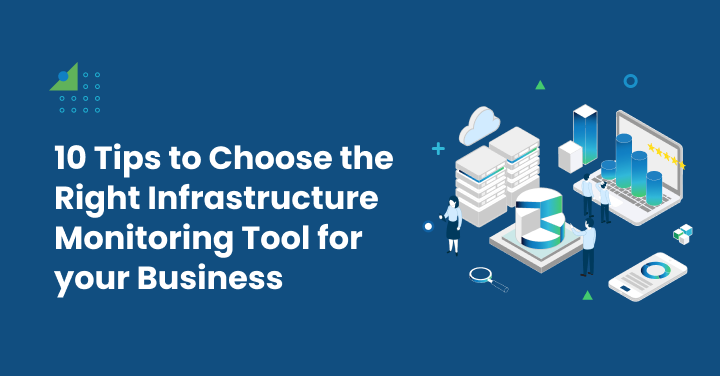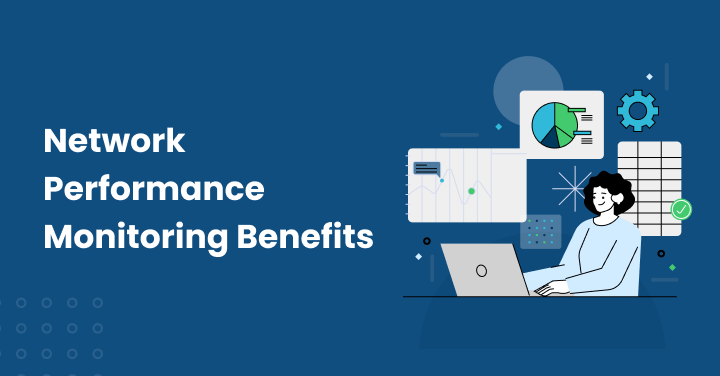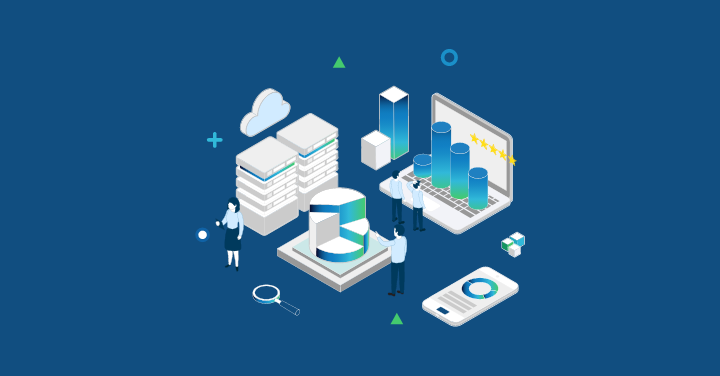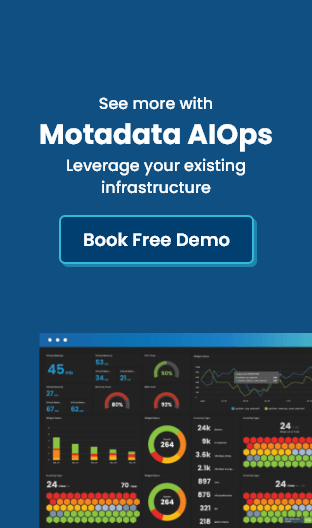Introduction
Imagine this: it’s Monday morning, and your company’s main e-commerce platform suddenly goes offline. Orders can’t be placed, customers are frustrated, and your IT team is scrambling to figure out what happened. Every minute of downtime costs your business thousands of dollars—not to mention long-term reputational damage.
This scenario highlights a brutal reality: no matter how advanced your technology stack is, downtime is inevitable. Hardware fails, software bugs emerge, and cyberattacks strike when least expected. The real question is not if something will go wrong, but how prepared your business is to respond.
That’s where infrastructure monitoring plays a pivotal role. Instead of relying solely on reactive responses after systems crash, monitoring provides real-time visibility, predictive insights, and performance validation that transforms disaster recovery (DR) and business continuity planning (BCP) into strategic, data-driven disciplines.
Before diving deeper, let’s clarify a few key terms:
- Infrastructure Monitoring: The continuous tracking and analysis of IT infrastructure—servers, networks, applications, storage, and cloud environments—to ensure availability, performance, and reliability.
- Disaster Recovery (DR): The process of restoring IT systems and data after a disruptive incident such as a cyberattack, natural disaster, or system failure.
- Business Continuity Planning (BCP): A broader strategy that ensures critical business functions continue to operate during and after an incident.
By aligning these three concepts, organizations can minimize downtime, protect customer trust, and build resilience into their operations.
1. Being Proactive: Stopping Problems Before They Start
The most effective approach to disaster recovery (DR) and business continuity planning (BCP) doesn’t begin when systems fail—it begins long before that moment.
Infrastructure monitoring enables organizations to stay one step ahead by proactively detecting risks, addressing performance issues early, and preventing minor incidents from escalating into major outages.
Three practices are especially critical: establishing baselines, leveraging predictive analytics, and setting up automated alerts.
Identifying the “New Normal”
The foundation of proactive monitoring lies in establishing performance baselines. Every IT environment has a “normal” state of operation—typical CPU utilization, memory consumption, disk I/O, network throughput, and application response times.
By capturing these metrics over time, organizations create a benchmark against which all future activity can be compared.
This baseline makes it possible to spot subtle deviations that may otherwise go unnoticed. For instance, if database queries that normally take 50 milliseconds begin creeping up to 150 milliseconds, the system hasn’t yet failed, but the data signals an impending bottleneck.
By recognizing these warning signs early, IT teams can take corrective action before the end user experiences downtime.
Predictive Analysis
Modern infrastructure monitoring tools go beyond static thresholds. Using AI and machine learning algorithms, they continuously analyze trends, compare them with historical baselines, and identify anomalies that might indicate developing issues.
Predictive analytics can forecast potential disruptions such as abnormal traffic surges, deteriorating hardware, memory leaks, or network saturation. Instead of relying on guesswork or waiting for an outage, monitoring provides early alerts—sometimes days before the incident occurs.
This shifts disaster recovery from a reactive firefight to a proactive defense strategy, reducing the “surprise factor” and giving teams valuable lead time to respond.
Automated Alerts & Escalation
Even with predictive insights, issues will still arise. This is why intelligent alerting systems are vital. Monitoring platforms can automatically notify the right stakeholders through channels like email, SMS, or direct integration with IT service management (ITSM) tools.
Equally important are escalation policies. If an alert goes unacknowledged, it must automatically be escalated to senior engineers or incident commanders. This ensures accountability, prevents alerts from being ignored, and accelerates resolution.
With structured alerting and escalation, small glitches are resolved quickly, preventing them from evolving into full-scale outages.
2. The Reactive Response: Real-Time Crisis Management
No matter how proactive an organization is, disruptions will still happen. Hardware fails, networks get congested, applications crash, and unexpected cyberattacks occur.
In these moments, the difference between prolonged outages and swift recovery lies in how quickly and accurately teams can respond. Infrastructure monitoring provides the real-time visibility needed to triage incidents, identify root causes, and validate recovery.
Incident Triage
When systems go down, time is of the essence. Monitoring platforms provide real-time dashboards that consolidate logs, metrics, and event traces into a single pane of glass. This immediate visibility allows IT teams to understand which services are affected, how widespread the issue is, and what business functions are impacted.
For example, if a web application suddenly becomes unavailable, monitoring tools can quickly reveal whether the problem stems from a load balancer misconfiguration, a database bottleneck, or an underlying network failure.
Instead of guessing, teams can take informed, targeted action, drastically reducing wasted time during the triage phase.
Faster Root Cause Analysis
One of the most frustrating aspects of an outage is identifying its root cause. Without monitoring, IT staff may waste hours sifting through scattered log files, restarting systems, or trial-and-error troubleshooting. With a robust monitoring solution in place, however, root cause analysis is accelerated.
Metrics highlight where performance degraded first—whether it was a firewall rule blocking legitimate traffic, a memory leak consuming application resources, or a failing disk on a critical server.
This clarity significantly reduces Mean Time to Resolution (MTTR), which is one of the most important KPIs in disaster recovery. Faster MTTR means less downtime, lower financial losses, and improved customer satisfaction.
Performance Validation
Recovery isn’t truly complete the moment systems come back online—it’s complete only when they operate at full performance. Infrastructure monitoring enables post-recovery validation by tracking KPIs such as application response times, uptime, throughput, and error rates.
This ensures that recovery objectives like Recovery Time Objective (RTO) and Recovery Point Objective (RPO) are actually being met. It also prevents “false positives,” where systems may appear operational but continue to function at degraded levels.
With monitoring in place, organizations can confidently declare incidents resolved.
3. The Strategic Core: Informing DR & BCP Planning
While proactive monitoring helps prevent failures and reactive monitoring aids rapid recovery, the true long-term value of infrastructure monitoring lies in how it shapes disaster recovery (DR) and business continuity planning (BCP).
Monitoring provides the hard data that transforms these plans from guesswork into measurable, continuously improving strategies.
Recovery Metrics: RPO & RTO
Two metrics are at the heart of every DR and BCP strategy:
- Recovery Point Objective (RPO): This defines the maximum tolerable amount of data loss an organization can sustain, typically expressed in minutes or hours. Infrastructure monitoring validates backup frequency and replication success, ensuring that data protection processes are not only scheduled but also consistently successful. If a backup fails, monitoring flags it immediately, helping IT teams fix issues before they jeopardize recovery goals.
- Recovery Time Objective (RTO): This represents the maximum acceptable downtime for critical systems. Monitoring provides insights into actual recovery timelines by tracking how long services take to return to normal. These insights highlight bottlenecks—whether in application restart procedures, database synchronization, or network restoration—so organizations can continuously improve recovery efficiency.
Without monitoring, RTOs and RPOs are theoretical estimates. With monitoring, they become measurable and actionable benchmarks.
Resource and Capacity Planning
Monitoring data is also invaluable for capacity planning. By analyzing long-term performance trends—such as CPU utilization, memory consumption, network throughput, and storage growth—organizations can predict when resources will hit thresholds.
This foresight allows IT leaders to plan for redundancy, invest in cloud failover strategies, and balance workloads across hybrid environments.
Such planning ensures that systems remain resilient, even under stress from unexpected spikes in demand or regional outages.
Testing and Iteration
Finally, disaster recovery plans must be tested regularly to remain effective. Too many organizations perform one-off drills and assume they’re prepared. Continuous testing is essential, and infrastructure monitoring makes it possible by capturing real-time performance metrics during simulations.
By identifying bottlenecks, validating recovery objectives, and revealing hidden gaps, monitoring supports an iterative improvement cycle. This transforms DR and BCP into dynamic strategies that evolve alongside business needs and technology changes.
Conclusion: A Resilient Future
Infrastructure monitoring is more than just a troubleshooting tool—it’s a strategic enabler of resilience. By detecting anomalies early, facilitating rapid crisis response, and shaping long-term recovery planning, monitoring becomes the backbone of effective disaster recovery and business continuity planning.
Organizations that integrate monitoring deeply into their DR and BCP initiatives not only minimize downtime but also gain confidence in their ability to withstand disruptions.
Now is the time to evaluate your monitoring strategy. Are your systems just being watched, or are they being truly understood and leveraged for resilience?
FAQs:
While all metrics are useful, the most critical include:
- System Health: Uptime and availability.
- Performance: CPU, memory, and disk utilization.
- Network: Latency, throughput, and packet loss.
- Application: Response times and error rates.
- Data Integrity: Backup and replication success/failure rates.
The right tool depends on your organization’s size, complexity, and requirements. Look for solutions that offer scalability, ease of integration, unified dashboards, customizable alerts, and full-stack visibility—from applications to infrastructure.
Monitoring acts as an early warning system by detecting unusual network activity, spikes in resource consumption, or unauthorized access attempts. Detailed logs provide invaluable forensic data for identifying attack vectors, understanding the timeline, and restoring systems securely.







